- Home
- Robin Cook
A Brain Page 3
A Brain Read online
Page 3
“Old man, huh?” whispered Martin. “For that comment, you’re going to be punished. I’m leaving these medical students in your hands. If they start to get bored, send them over to the angiography room. We’ll give them an overdose of the clinical before the theoretical.”
Sanger nodded in resigned agreement.
“And when you finish the morning CAT schedule,” continued Philips, still whispering, “come over to my office. Maybe we can steal away to the coffee shop!”
Before she could answer he took his long white coat, and left.
The surgical suites were on the same floor as Radiology, and Philips headed in that direction. Dodging a traffic jam of gurneys laden with patients waiting for fluoroscopy, Philips cut through the X-ray reading room. It was a large area with partitions formed by banks of X-ray viewing boxes, populated currently by a dozen or so residents chatting and having coffee. The daily avalanche of X ray had yet to arrive, although the X-ray machines had been busy for about half an hour. First it would be a trickle of films, then a flood. Philips remembered all too well from his days as a resident. He’d trained at the Med Center and, responding to the tough atmosphere of one of the biggest and best radiology departments in the country, he had passed many twelve-hour days in that very room.
His reward for his effort had been an invitation to stay on for his fellowship in neuroradiology. When he’d finished, his performance had been so outstanding, he’d been offered a staff position with a joint appointment with the medical school. From that fledgling position he’d risen rapidly to his present status, Assistant Chief of Neuroradiology.
Philips stopped momentarily in the very center of the X-ray reading room. Its unique, low-level illumination, coming from the fluorescent bulbs behind the frosted glass of the X-ray viewing boxes, cast an eerie light over the people in the room. For a moment the residents looked like corpses with dead white skin and empty eye sockets. Philips wondered why he had never noticed this before. He looked down at his own hand. Its color was the same pasty hue.
He walked on feeling strangely unsettled. It was not the first time in the last year he had seen some familiar hospital scene through jaundiced eyes. Perhaps the reason was a slight but fomenting dissatisfaction with his job. His work was becoming progressively more administrative and, on top of that, he felt stagnated by circumstance. The Chief of Neuroradiology, Tom Brockton, was fifty-eight and was not considering retiring. Besides, the Chief of Radiology, Harold Goldblatt, was also a neuroradiologist. Philips had to recognize that his meteoric rise within the department had ground to a halt, not for lack of ability on his part, but because the two positions over him were solidly occupied. For almost a year Philips had reluctantly begun to entertain the idea of leaving the Med Center for another hospital where he would have a shot at the top.
Martin turned down the corridor leading to surgery. He passed through the double swinging doors, whose sign warned visitors that they were entering a restricted area, and went through another set of swinging doors, to the patient-holding room. Here stood a swarm of gurneys filled with anxious patients awaiting their turn to be dissected. At the end of this large area was a long built-in white Formica desk guarding the entrance to the thirty operating rooms and to the recovery area. Three nurses in green surgical scrub dresses were busy behind the desk making sure the right patient got into the right room so he’d get the right operation. With almost two hundred operations in any twenty-four-hour period, this was a full-time job.
“Can someone tell me about Mannerheim’s case?” asked Philips as he leaned over the desk.
All three nurses looked up and began to speak at once. Martin, being one of the few eligible doctors, was a welcome visitor to the OR. When the nurses realized what had happened, they laughed and then made an elaborate ceremony of deferring to one another.
“Maybe I should ask someone else,” said Philips, pretending to leave.
“Oh, no,” said the blond nurse.
“We can go back in the linen closet to discuss it,” suggested the brunette. The OR was the one place in the hospital where inhibitions were relaxed. The atmosphere was totally different from any other service. Philips thought that perhaps it had something to do with everyone wearing the same pajama-like clothing, plus the potential for crisis, where sexual innuendos provided a relief valve. Whatever it was, Philips remembered it very well. He’d been a surgical resident for one year before deciding to go into radiology.
“Which one of Mannerheim’s cases are you interested in?” asked the blond nurse. “Marino?”
“That’s right,” said Philips.
“She’s right behind you,” said the blond nurse.
Philips turned. About twenty feet away was a gurney supporting the covered figure of a twenty-one-year-old woman. She must have heard her name through the fog of her preoperative medication because her head slowly rolled in Philips’ direction. Her skull was totally shaved in anticipation of her surgery, and the image reminded Philips of a small songbird without its feathers. He’d seen her briefly twice before when she was having her preoperative X rays, and Philips was shocked how different she looked now. He had not realized how small and delicate she was. Her eyes had a pleading quality like an abandoned child, and Philips had all he could do to turn away, directing his attention back to the nurses. One of the reasons he’d switched from surgery to radiology had been a realization he couldn’t control his empathy for certain patients.
“Why haven’t they started her?” he asked the nurse, angry the patient was being left to her fears.
“Mannerheim’s been waiting for special electrodes from Gibson Memorial Hospital,” said the blond nurse. “He wants to make some recordings from the part of the brain he’s going to remove.”
“I see . . .” said Philips, trying to plan his morning. Mannerheim had a way of upsetting everyone’s schedules.
“Mannerheim’s got two visitors from Japan,” added the blond nurse, “and he’s been putting on a big show all week. But they’ll be starting in just a couple of minutes. They’ve called for the patient. We just haven’t had anybody to send with her.”
“Okay,” said Philips, already starting back across the patient-holding area. “When Mannerheim wants his localization X rays, call my office directly. That should save a few minutes.”
As he retraced his steps, Martin remembered he still had to shave and headed for the surgical lounge. At eight-ten it was almost deserted since the seven-thirty cases were all under way and the “to follow” cases could not hope to begin for some time. Only one surgeon was there talking on the telephone to his stockbroker while absentmindedly scratching himself. Philip passed into the changing area and twirled the combination to his foot-square locker, which Tony, the old man who took care of the surgical area, had allowed him to keep.
As soon as he had his face completely lathered, Philips’ beeper went off making him jump. He hadn’t realized how taut his nerves were. He used the wall phone to answer, trying to keep the shaving cream from the receiver. It was Helen Walker, his secretary, informing him that William Michaels had arrived and was waiting for him in his office.
Philips went back to his shaving with renewed enthusiasm. All his excitement about William’s surprise came roaring back. He splashed himself with cologne and struggled back into his long white coat. Passing back through the surgical lounge, he noticed the surgeon was still on the phone with his broker.
When Martin reached his office he was at a half run. Helen Walker looked up from her typing with a start as the blurred image of her boss passed by her. She began to get up, reaching for a pile of correspondence and phone messages, but stopped when the door to Philips’ office slammed shut. She shrugged and went back to her typing.
Philips leaned against the closed door, breathing heavily. Michaels was casually leafing through one of Philips’ radiology journals.
“Well?” said Philips excitedly. Michaels was dressed as usual in his ill-fitting, slightly worn tweed jacket,
which had been purchased during his third year at M.I.T. He was thirty but looked twenty, with hair so blond that it made Philips’ look brown by comparison. He smiled, his small impish mouth expressing satisfaction, his pale blue eyes twinkling.
“What’s up?” he said, pretending to go back to the magazine.
“Come on,” said Philips, “I know you’re just trying to rile me. The trouble is that you’re being too successful.”
“I don’t know what . . .” began Michaels, but he didn’t get any further. In one swift motion, Philips stepped across the room and tore the magazine from his hands.
“Let’s not play dumb,” said Philips. “You knew that telling Helen you had a ‘surprise’ would drive me crazy. I almost called you last night at four A.M. Now I wish I had. I think you deserved it.”
“Oh, yeah, the surprise,” teased Michaels. “I almost forgot.” He leaned over and rummaged in his briefcase. A minute later he had pulled out a small package wrapped with dark green paper and tied with a thick yellow ribbon.
Martin’s face fell. “What’s that?” He’d expected some papers, most likely computer print-out paper, showing some breakthrough in their research. He never expected a present.
“It’s your surprise,” said Michaels, reaching toward Philips with the package.
Philips’ eyes moved back to the gift. His disappointment was so acute it was almost anger. “Why the hell did you buy me a present?”
“Because you’ve been such a wonderful research partner,” said Michaels, still holding the package toward Philips. “Here, take it.”
Philips reached out. He had recovered from the shock enough to be embarrassed about his reaction. No matter how he felt he didn’t want to hurt Michaels’ feelings. After all, it was a nice gesture.
Philips thanked him while feeling the weight of the package. It was light and about four inches long and an inch high.
“Aren’t you going to open it?” asked Michaels.
“Sure,” said Philips, studying Michaels’ face for an instant. Buying a present seemed so out of character for this boy genius from the Department of Computer Science. It wasn’t that he wasn’t friendly or generous. It was just that he was so completely involved with his research that he usually overlooked amenities. In fact, during the four years they’d been working together, Philips had never seen Michaels socially. Philips had decided that Michaels’ incredible mind never turned off. After all, he had been singled out to head the newly created Division of Artificial Intelligence for the university at twenty-six. He’d completed his Ph.D. at M.I.T. when he was only nineteen.
“Come on,” said Michaels impatiently.
Philips pulled off the bow and dropped it ceremoniously among the debris on his desk. The dark green paper followed. Beneath was a black box.
“There’s a little symbolism there,” said Michaels.
“Oh?” said Philips.
“Yeah,” said Michaels. “You know how psychology treats the brain: like a black box. Well, you get to look inside.”
Philips smiled weakly. He didn’t know what Michaels was talking about. He pulled off the top of the box and separated some tissue. To his surprise he extracted a cassette case labeled Rumors by Fleetwood Mac.
“What the hell,” smiled Philips. He hadn’t the foggiest idea why Michaels would buy him a recording by Fleetwood Mac.
“More symbolism,” explained Michaels. “What’s inside is going to be more than music to your ears!”
Suddenly the whole charade made sense. Philips flipped open the case and pulled out the cassette. It wasn’t a musical recording. It was a computer program.
“How far did we get?” asked Philips almost in a whisper.
“It’s the whole thing,” said Michaels.
“No!” said the incredulous Martin.
“You know the last material you gave me? It worked like a charm. It solved the problem of density and boundary interpretation. This program incorporates everything you’ve included in all your flow sheets. It will read any skull X ray you give it, provided you put it into that piece of equipment over there.” Michaels pointed to the back of Philips’ office. There on the top of Philips’ worktable was a TV-sized electrical apparatus. It was obvious that it was built as a prototype rather than production model. The front was made of a plain stainless steel plate and its attaching bolts protruded. In the upper left-hand corner was a slot that was made to take the program cassette. Two electrical trunks protruded from its sides. One trunk fed into a typewriter input/output device. The other came from a rectangular stainless steel box about four feet square and one foot high. On the front of this metal apparatus was a long shot with visible rollers for the insertion of an X-ray film.
“I don’t believe it,” said Philips, afraid that Michaels was teasing him again.
“Neither do we,” admitted Michaels. “Everything just suddenly fell together.” He walked over and patted the top of the computer unit. “All the work you’d done in breaking down the problem-solving and pattern-recognition aspects of radiology not only made it apparent we needed new hardware but also suggested the way to design it. This is it.”
“Looks simple from the outside.”
“As usual, appearances are deceptive,” said Michaels. “The innards of this unit are going to revolutionize the computer world.”
“And think what it’s going to do to the field of radiology if it can really read X rays,” said Martin.
“It will read them,” said Michaels, “but there could still be bugs in the program. What you have to do now is run the program against as many skull X rays as you can find that you have read in the past. If there are problems, I think they will be in the area of false negatives. Meaning the program will say the X ray is normal when pathology is really present.”
“That’s the same problem with radiologists,” said Philips.
“Well, I think we’ll be able to eliminate that in the program,” said Michaels. “It’s going to be up to you. Now to work this thing, first turn it on. I think even a doctor of medicine will be able to do that.”
“Without doubt,” said Philips, “but we’ll need a Ph.D. to plug it in.”
“Very good,” Michaels laughed. “Your humor is improving. Once the unit is plugged in and turned on, you insert the cassette program into the central unit. The output printer will then inform you when to insert the X-ray film into the laser scanner.”
“What about the orientation of the film?” asked Philips.
“Doesn’t matter, except the emulsion side has to be down.”
“Okay,” said Philips, rubbing his hands together and eyeing the unit like a proud parent. “I still can’t believe it.”
“I can’t, either,” said Michaels. “Who would have guessed four years ago that we could have made this kind of progress? I can still remember the day you arrived unannounced in the Department of Computer Science, plaintively asking if anyone was interested in pattern recognition.”
“It was just pure luck that I bumped into you,” returned Philips. “At the time I thought you were one of the undergraduates. I didn’t even know what the Division of Artificial Intelligence was.”
“Luck plays a role in every scientific breakthrough,” agreed Michaels. “But after the luck, there’s lots of hard work, like what’s facing you. Remember the more skull films you run with the program, the better it will be, not only to debug the program, but also because the program is heuristic.”
“Let’s not pull any big words on me,” said Philips. “What do you mean ‘heuristic’?”
“So you don’t like some of your own medicine,” laughed Michaels. “I never thought I’d hear a doctor complain about incomprehensible words. A heuristic program is one that is capable of learning.”
“You mean this thing will get smarter?”
“You got it,” said Michaels, moving toward the door. “But it’s up to you now. And, remember, the same format will be applicable to other areas of radiology. So in your spare t
ime, as if you’re going to have any, start the flow sheet for reading cerebral angiograms. I’ll talk to you later.”
Closing the door behind Michaels, Philips went over to the worktable and eyed the X-ray-reading apparatus. He was eager to begin to work with it immediately, but he knew the burden of his daily routine proscribed it. As if in confirmation, Helen walked in with a pile of correspondence, telephone messages, and the cheerful news that the X-ray machine in one of the cerebral angiography rooms wasn’t functioning properly. Reluctantly Philips turned his back on the new machine.
4
“Lisa Marino?” asked a voice, causing Lisa to open her eyes. Leaning over her was a nurse named Carol Bigelow, whose dark brown eyes were the only portion of her face visible. A flower-print hat contained her hair. Her nose and mouth were covered by a surgical mask.
Lisa felt her arm lifted and rotated so the nurse could read her identification bracelet. The arm was replaced and patted. “Are you ready for us to fix you up, Lisa Marino?” asked Carol, releasing the brake mechanism on the gurney with her foot, and pulling the bed out from the wall.
“I don’t know,” admitted Lisa, trying to see up into the nurse’s face. But Carol had turned away saying, “Sure you are,” as she pushed the bed past the white Formica desk.

 Shock
Shock Mutation
Mutation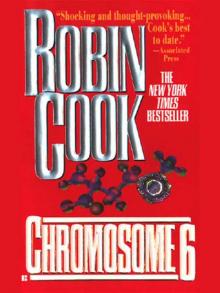 Chromosome 6
Chromosome 6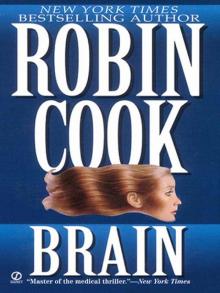 Brain
Brain Intervention
Intervention Invasion
Invasion The Legend of Parzival: The Epic Story of His Quest for the Grail
The Legend of Parzival: The Epic Story of His Quest for the Grail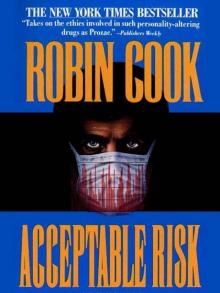 Acceptable Risk
Acceptable Risk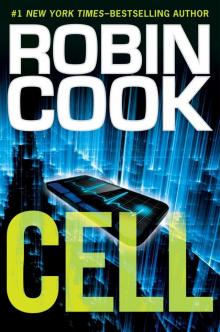 Cell
Cell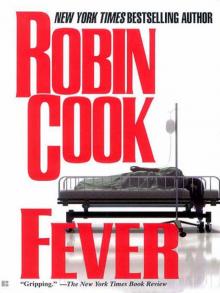 Fever
Fever Death Benefit
Death Benefit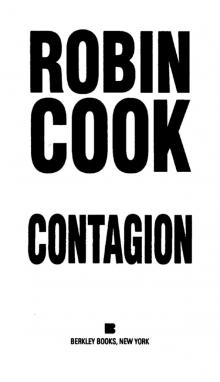 Contagion
Contagion Mindbend
Mindbend Coma
Coma Vital Signs
Vital Signs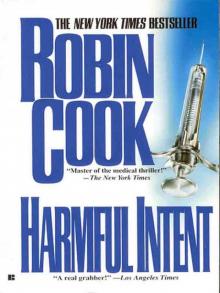 Harmful Intent
Harmful Intent Critical
Critical Foreign Body
Foreign Body Marker
Marker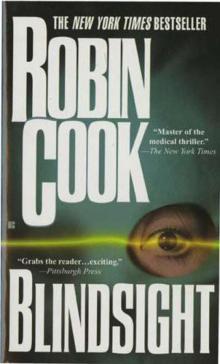 Blindsight
Blindsight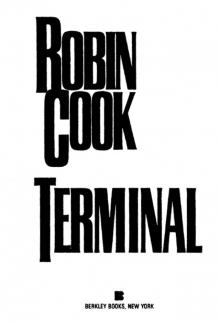 Terminal
Terminal Sphinx
Sphinx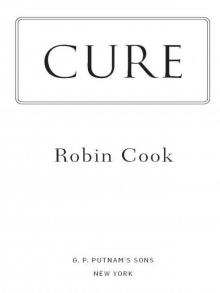 Fatal Cure
Fatal Cure Host
Host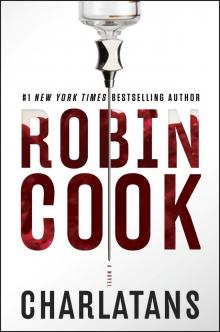 Charlatans
Charlatans Crisis
Crisis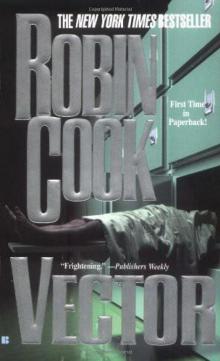 Vector
Vector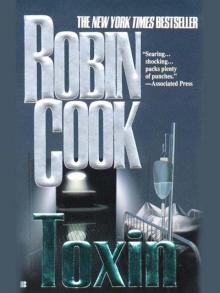 Toxin
Toxin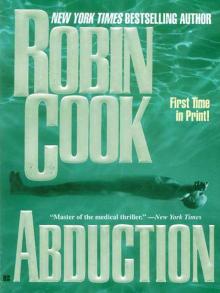 Abduction
Abduction Viral
Viral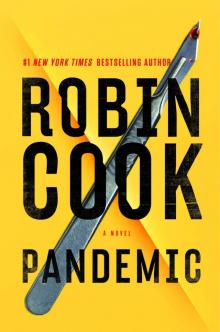 Pandemic
Pandemic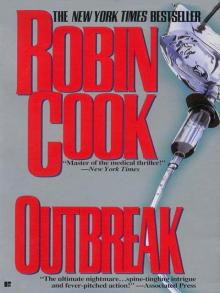 Outbreak
Outbreak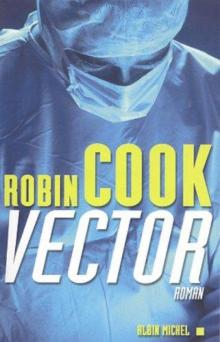 Vector js&lm-4
Vector js&lm-4 Godplayer
Godplayer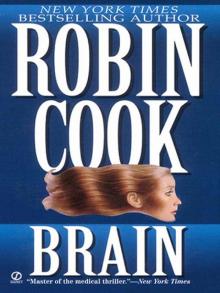 A Brain
A Brain Year of the Intern
Year of the Intern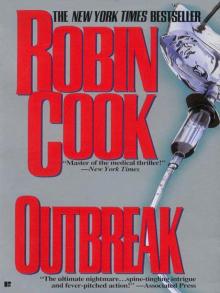 Outbreak dmb-1
Outbreak dmb-1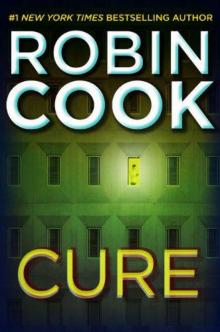 Cure
Cure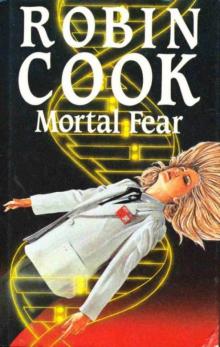 Mortal Fear
Mortal Fear The Legend of Parzival
The Legend of Parzival Vital Signs dmb-2
Vital Signs dmb-2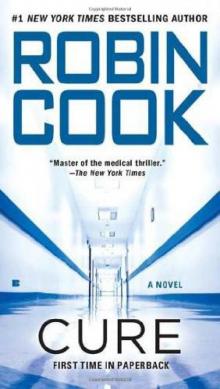 Cure (2010) sam-10
Cure (2010) sam-10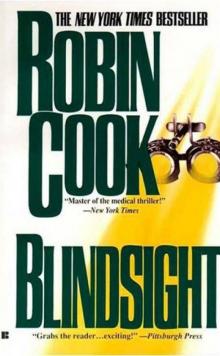 Blindsight sam-1
Blindsight sam-1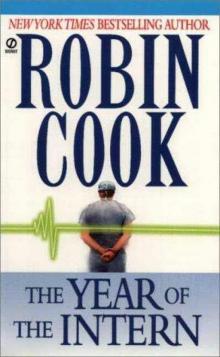 The Year of the Intern
The Year of the Intern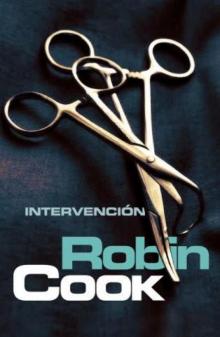 Intervention sam-9
Intervention sam-9 Foreign Body sam-8
Foreign Body sam-8